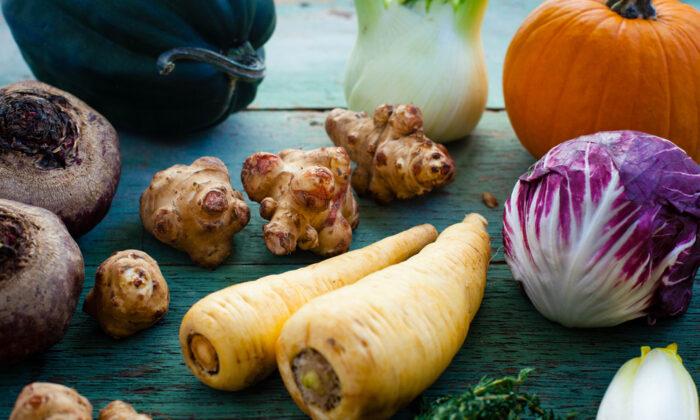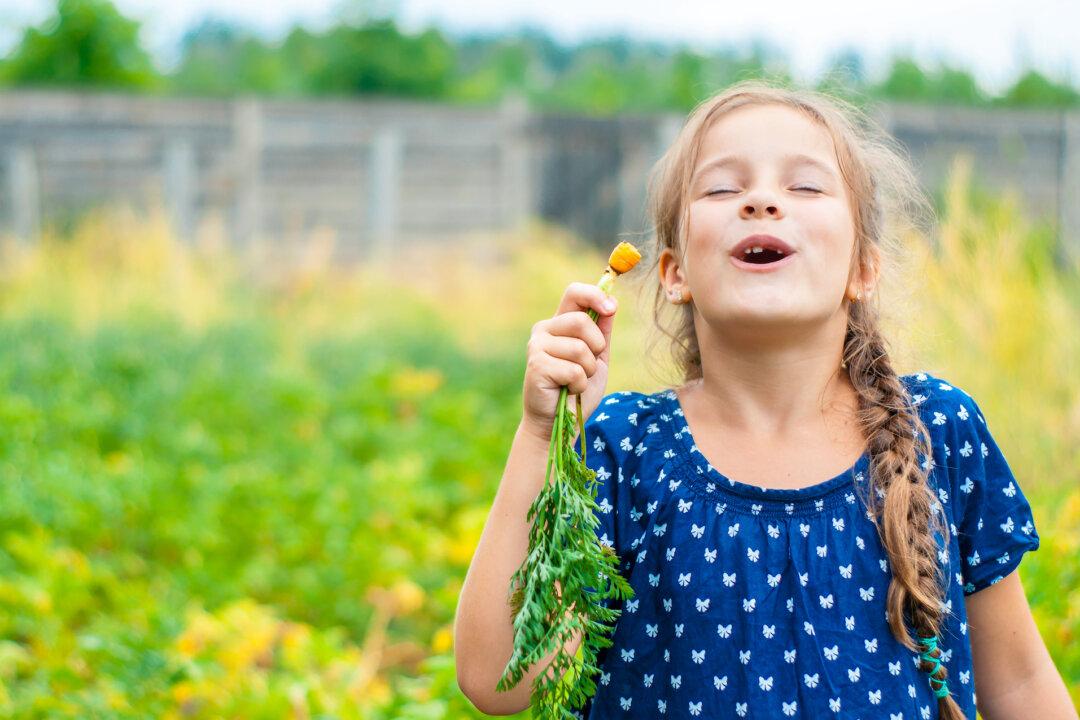Ah, summer. Overnight dew on lush green grass, high-climbing roses and sunflowers, afternoon picnics in the warm sun, evenings when light lingers late in the sky. Summer is the home gardener’s Eden.
It’s also the time to think about winter.
A large swath of the United States is generally mild enough, especially in a warming world, for dedicated gardeners to grow specialized vegetable varieties that have been bred to grow and thrive in the cold months, from November through March. Roughly the lower two-thirds of the country, and both coasts, afford a wide latitude for winter gardening; and dedicated, adventurous growers can spread the fun as far north as southern Minnesota, where winter rutabagas have been grown for more than a century.
ASAP Is SOP
Though seed guides claim that many winter vegetable varieties can be started any time from June onward, this becomes wishful thinking as the calendar rolls along. Get the seeds in the ground before July 4—not in August, and definitely not in September. Your goal is to have a healthy, burgeoning young plant by the autumn equinox so that it will be able to grow big and strong through autumn and stand ready as winter comes. Keep in mind that little or no actual growth will take place between November 1 and March 15, unless you are far south, so whatever you have at the end of November is what you’ve got until growing resumes in March.All Gardening Is Local
The old political truism that “all politics is local” is especially germane when it comes to growing things: You can have microclimates right in your own yard. Plant something against the south wall of your house or garage, and it will be significantly more protected than it would in a northern exposure. Low points on your property accumulate cold air and freeze sooner and harder than high spots.Of course, the same applies to geographic regions. Lettuce might make it through a mild winter in southern Minnesota, while it will do fine in southern Missouri. South-facing topographies, such as central Arkansas below the Ozarks, are less subject to harsh weather, as are the Piedmont foothills of the Appalachians on the East Coast.
Hose in Hand Every Day
Your little seedlings are striving toward the sky under somewhat dire circumstances: hot weather, drying winds, daylong blasts of sun. They need a refreshing shower often. I try to thoroughly wet my winter-crop seedbeds every day, especially in July. Remember that these little plantlets have roots barely an inch or two long, and soil can easily dry to that depth in mere hours in midsummer. Dried out seedlings may or may not die, but they won’t thrive. Moist is choice!Thank You for Thinning
Since you wisely started by overseeding, one of the most tedious, painful, wretched garden chores is essential. I hate yanking out little seedlings that I asked to grow in the first place, and it is a painstaking task. But I’m just doing what nature does anyhow, and the outcome is highly beneficial: Vegetables need room to grow.Transplant Fever
Assuming you have started your crops in a seed bed and need to move them to late-summer fallow ground occupied by, say, now-dead peas, transplanting is necessary. No problem—many winter vegetables transplant readily when they are small. Pick a cloudy, cool day, if possible, and get out that hose again. Transplant beds need regular soaking until fall rains arrive; the plant sets are as vulnerable to dry ground failure as their seedlings were a month ago.
Winter Is Coming
Unless you live in a climate where winter temperatures reliably stay above 20 degrees (with perhaps a brief plunge no lower than 15), you’ll need to protect your vegetables. Sounds daunting—are we talking about sweaters for each cabbage? Sort of, yes.For subsurface crops such as parsnips and carrots, a 2-inch layer of mulch or straw will provide ample protection; just don’t try to dig up anything while the ground itself is frozen hard. A layer of straw, hay, or leaves heaped around and above over-ground vegetables such as lettuce or escarole will significantly boost their cold-hardiness and aid in recovery after a freeze.
In Case of Arctic Attack
So a cold front came roaring down from Alberta and flash-froze your yard, leaving your winter vegetables looking like a heap of wet laundry slumped on the ground. Despair not; plants have amazing recovery abilities and will likely be just fine again in a week as the weather “warms” back up past 32 degrees. I’ve seen celery, mustard, and kale all drooping like windless flags one day, standing back upright and strong three days later.Will the quality remain pristine? There may be a touch of mushiness, but your homegrown greens are still better than industrial lettuce trucked a thousand miles.
6 Favorite Winter Varieties
All these are hardy, proven, old-fashioned edibles that, given proper care, can provide fresh vegetables for your dinner table almost every night from November to April:- January King cabbage: Its name reveals the raison d’etre for this large, lightly purpled vegetable that can yield 4-pound heads. It has been a staple in northern Europe for generations. Heavy feeders, cabbage and kale need fertile, nitrogen-rich ground for best results.
- Russian red kale: The red is mostly a tinge along the leaf stems. Its sweet taste is enhanced by frost, and once the main harvest is over at the end of March, the flower spears can be plucked many times to provide what are essentially the same as broccolini.
- Touchstone gold beets: The sweetness and rich flavor of these unfailingly astound my farm guests who have had only standard purple beets. Goldens are as hardy as red beets, and can sometimes reach an amazing size, close to a half-pound.
- Winter density lettuce: Lettuce is one of the more marginal winter crops—but if you’re lucky, a great delight in December. This short, Romaine-type lettuce benefits from straw heaped around it in midwinter.
- Red giant mustard: No need to spice up the dressing when you chop these large, savoyed, colorful leaves into your salad. It’s a very hardy winter green.
- White Spear parsnip: These roots can easily reach past a foot by March, so be sure to give them very deep soil in which to do their thing. Exceptional specimens are ample all by themselves for a lamb stew.





